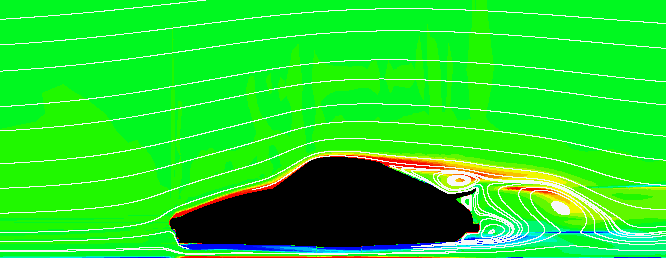 |
GAMM Workshop |
Comparison of LES and RANS for Bluff-Body Wake FlowsStefan Schmidt, Holger Lübcke |
Technische Universität Berlin
|
Here we compare the two principal techniques for the numerical simulation of turbulent flows - LES and RANS. This comparison focuses on bluff-body flows, that often occur in engineering application, i.e. the flow around a car, Fig. 1. This flow involves strong streamline curvature, separation and often vortex shedding. Such phenomena are directly influenced by turbulence and therefore any method which does not account for turbulence in a correct manner is most likely to fail.
 |
Using RANS, the computational costs can be reduced by solving the statistically averaged equation system, which requires closure assumptions for the higher moments.
LES aims to reduce the dependence on the turbulence model, hence the major portion of the flow is simulated without any models, and must be resolved by the grid. Only scales smaller than the resolution of the grid need a model. Since the large scales captured without contraints, a LES will be unsteady and 3D and consequently computationally more demanding than RANS.
1 2 3 4 |

|